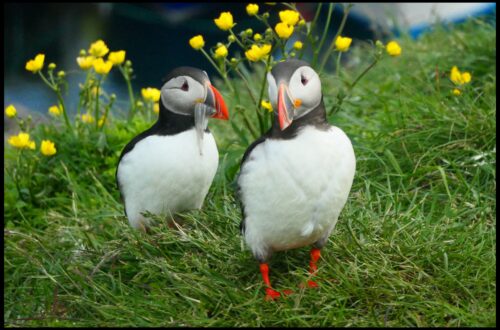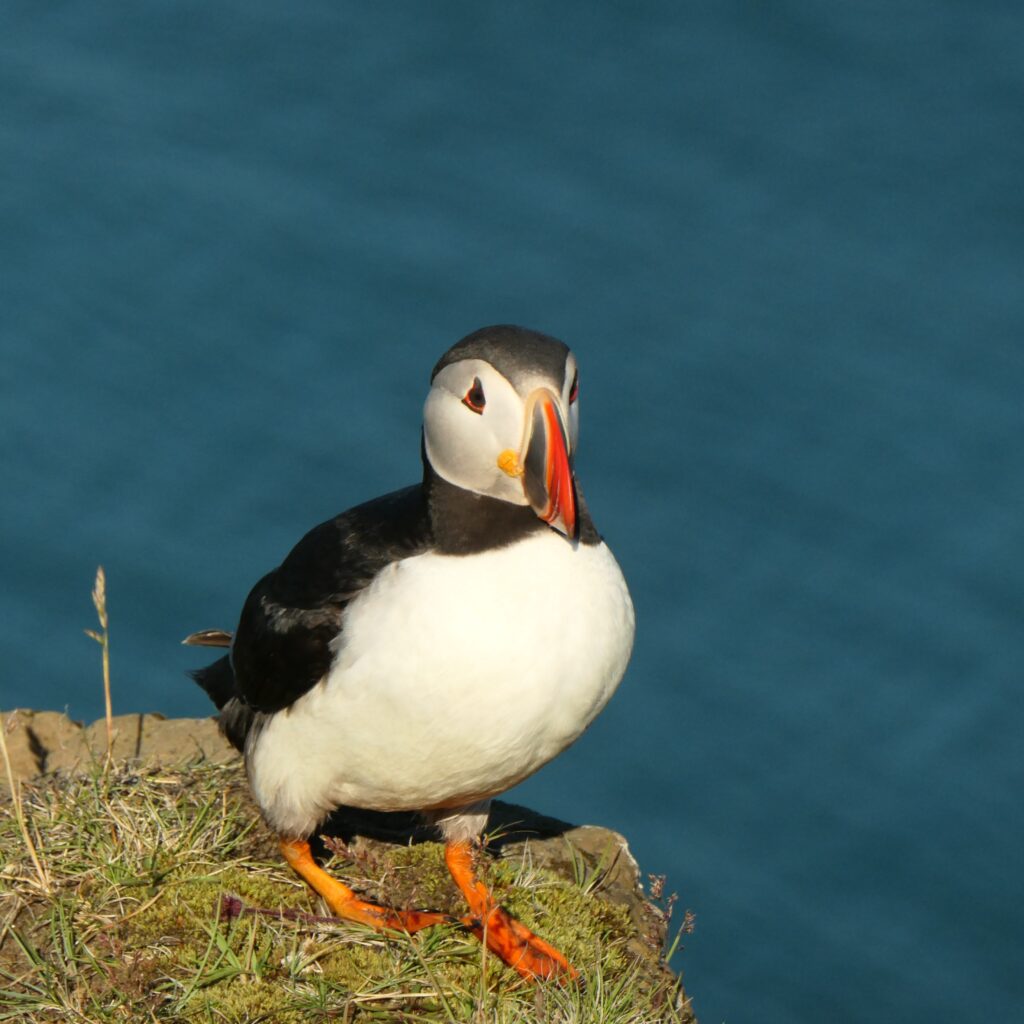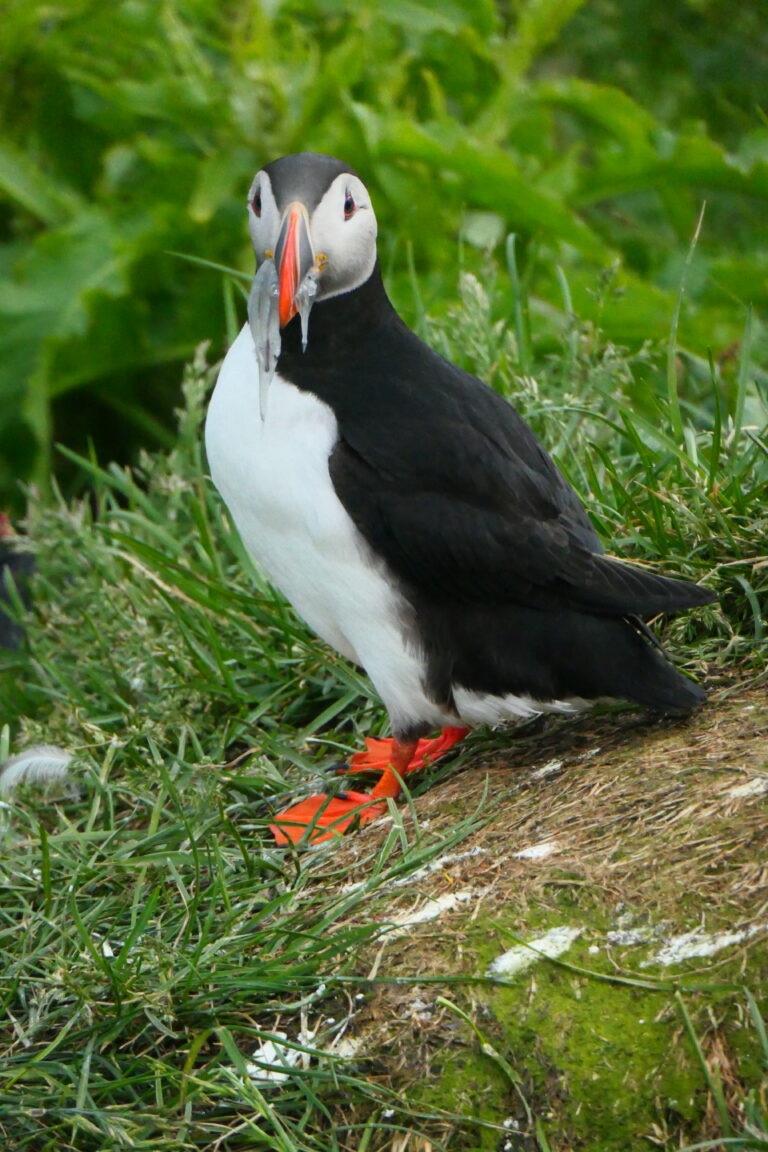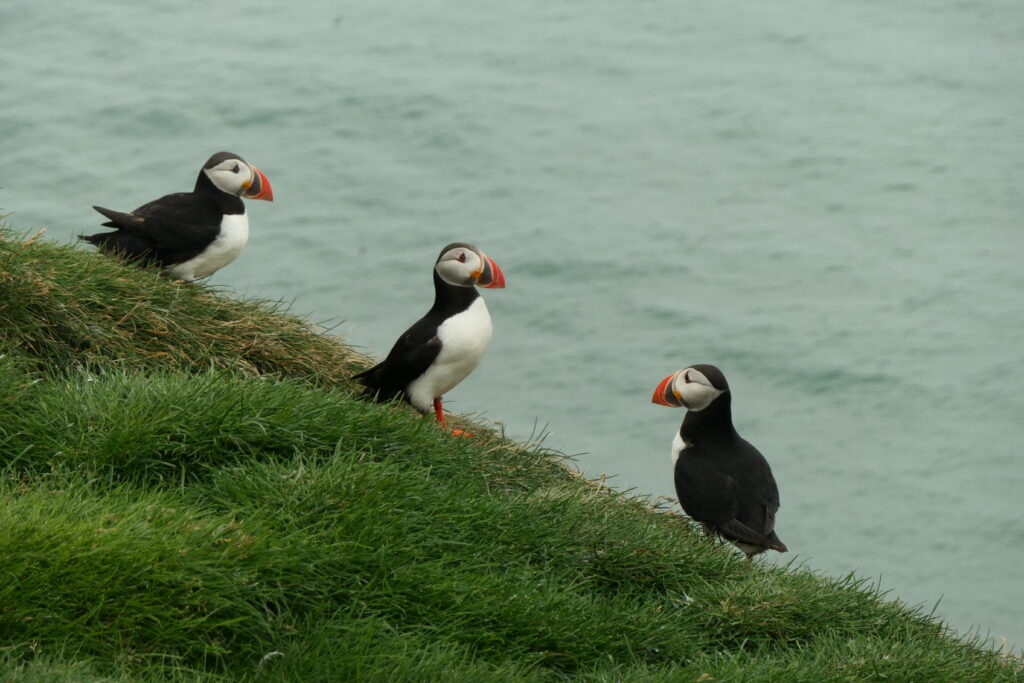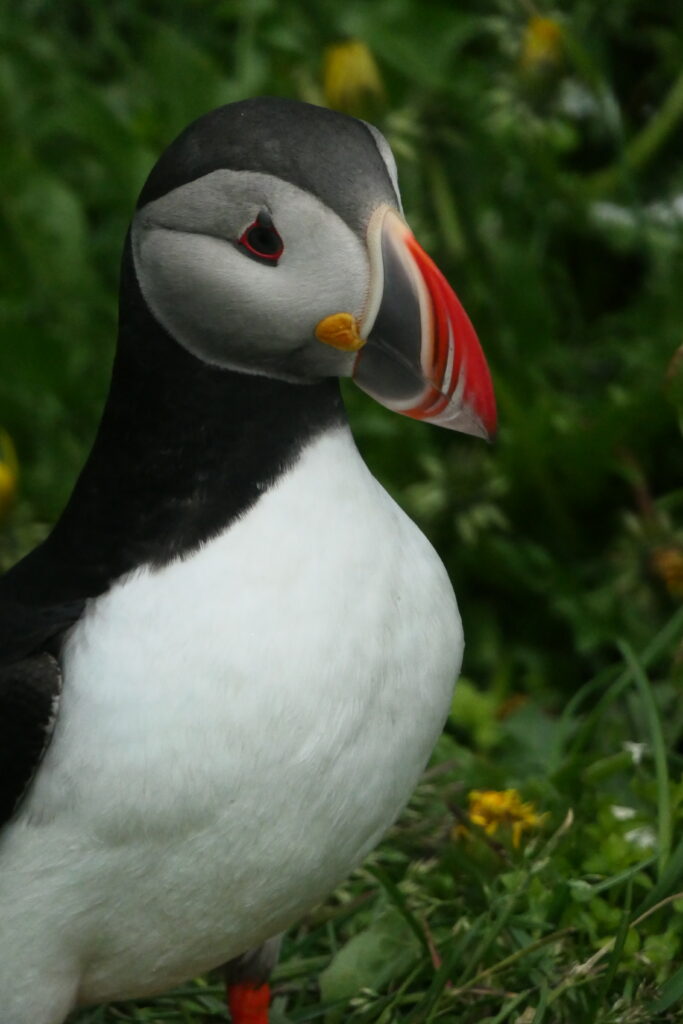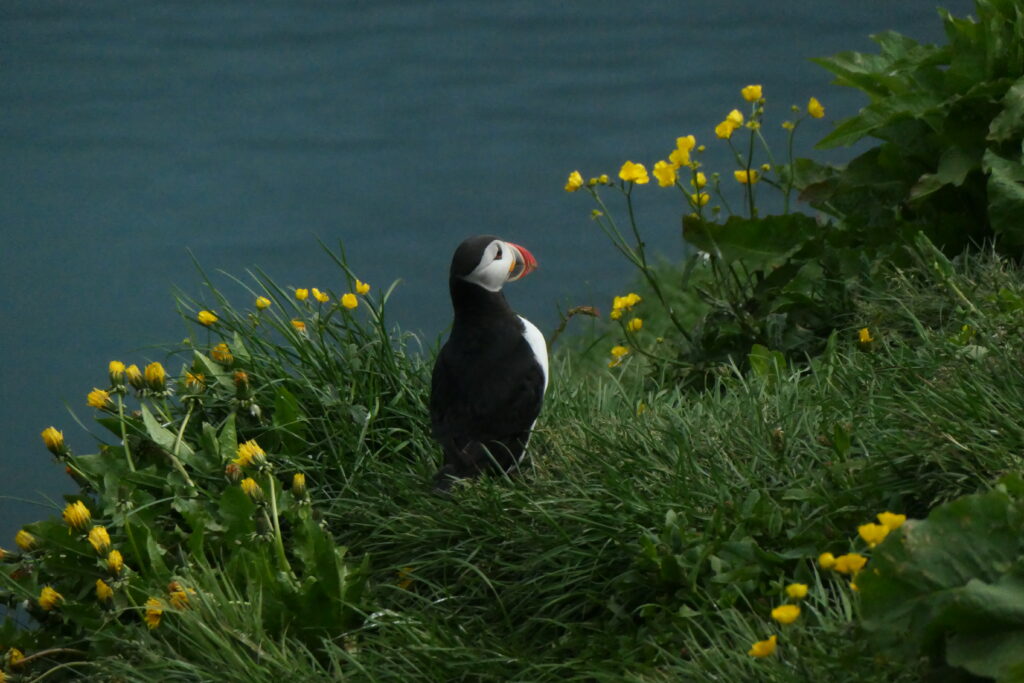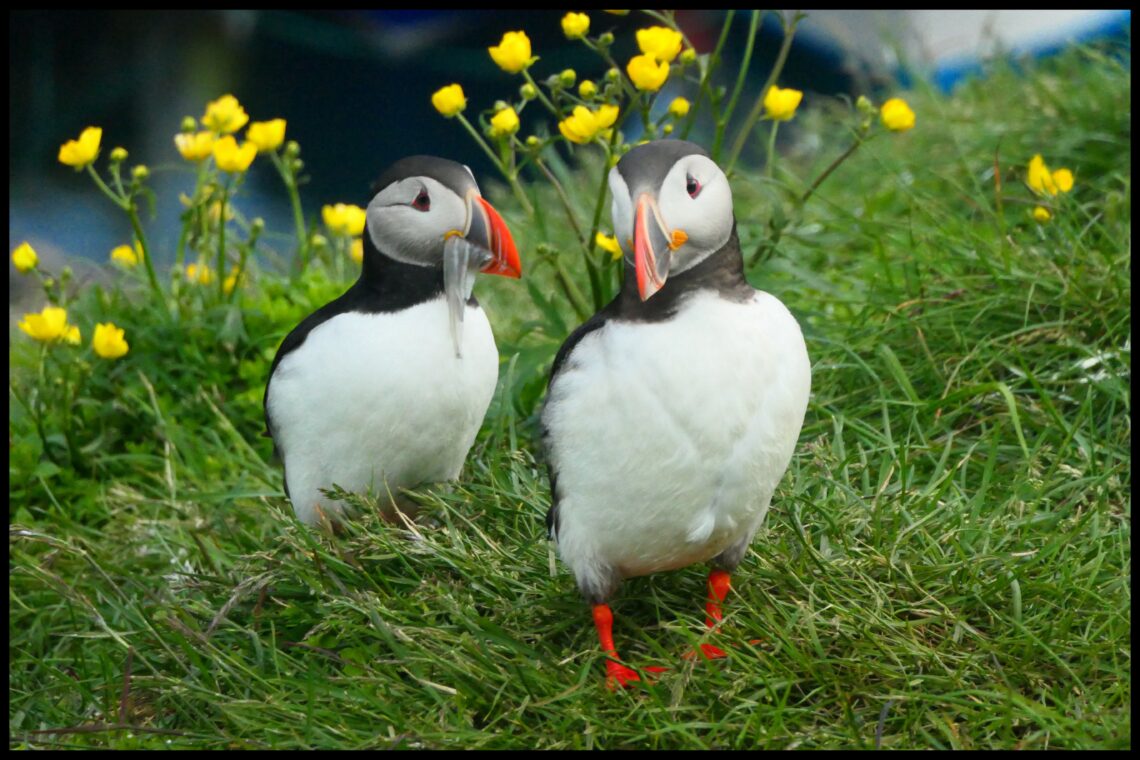
Puffins
Over 60% of the world’s puffin population breed in Iceland. Read all about the cute birds and where to find them here.
Puffins are a bird species from the family of auks (isl. Lundi, lat. Fratercula arctica). They are about 30 cm high, have a wingspan of 50-60 cm and weigh just under 400 grams. The back and top of the head and wings are black, while the belly, sides of the head and underside of the wings are white. The legs and feet are bright red, as is the characteristic, pointed, triangular beak, which is often streaked with yellowish or greyish lines. The young birds are called pufflings and their beak and the eye region are gray. Puffins can live up to 20 years.
In the summer months, puffins can be found on the coasts and islands of the North Atlantic, such as in eastern North America, Greenland, Iceland, Svalbard, Norway, the Faroe Islands, Great Britain and Ireland. The breeding season begins in mid-April (first sightings in Iceland are usually around April 10th) and they leave the mainland in mid-August. They then spend the winter months on the open sea further south, e.g. in Newfoundland, the North Sea or even on the Canary Islands.
They feed on fish, particularly sandeel and capelin. Due to dwindling populations of these fish, the population of puffins has also declined significantly in recent years, which is why they are now classified as endangered. The birds were also hunted for a long time, and they are still considered a delicacy, especially on the Westman Islands.
Puffins do not build nests, but dig burrows up to one meter long in the ground. That is why they are rarely found on particularly stony cliffs, but rather in the upper turf. Pairs of puffins are monogamous, at least during the season, and often stay together for life. The female lays only one egg at a time, and both partners take on the hatching and feeding of the young equally.
They can flap their rather short wings incredibly fast (up to 400 times a minute) and they are amazing swimmers and can even dive to depths of 70 meters, but on land they are rather clumsy and they usually need a running start to get in the air.
The puffins are usually not particularly shy and hardly let themselves be disturbed by humans. However, they do not like hasty movements, as this is how their natural predators (e.g. the great skuas) attack them. And please always remember that puffins are wild animals, they may bite if they feel threatened. In addition, human touch can destroy the oil on the feathers, which they need for their life on the water.
Faxaflói: From Reykjavík harbor there are tours to various islands around the capital, e.g. from Elding.
Westman Islands: Up to 1 million pairs of puffins breed on the Westman Islands, so it’s a great place for bird watching. There is a small observation house, at Stórhöfði, the southernmost point of Heimaey island, but you can also see them in many other places. A special spectacle takes place from mid-August when the young birds fly out. Irritated by the city lights, they often end up in the streets, where the island’s children pick them up, take care of them and set them free the next morning. There are also a few puffins to see at the SEA LIFE Trust.
Dýrholaey / Reynisfjara: A nice place to watch puffins is in the south just before Vík at Cape Dyrhólaey and on Reynisfjara beach. Attention, during the breeding season from around mid-May to the end of June, access to the upper part of the nature reserve (near the lighthouse) is restricted from 7 p.m. to 9 a.m. the next morning.
Ingolfshöfdi: The headland in the southeast between Skaftafell and Jökulsárlón is named after one of Iceland’s first settlers, Ingolfur Arnarson. The cape can only be reached with a guided Tour. You first drive in a tractor hay wagon over a swampy sandy plain, then climb a sandy hill and then walk along the cliffs where there are many opportunities for photographing the puffins. I highly recommend this tour!
Papey und Skrúður: Two uninhabited islands in eastern Iceland with over 100,000 pairs of puffins each. The latter cannot be visited, Papey only with a private boat tour from Djúpivogur.
Borgarfjördur eystri: One of the best places to see puffins. Around 10,000 pairs of birds breed on the tiny peninsula of Hafnarhólmi (“Puffin Marina”), ¾ of them puffins. A wooden platform allows you to get extremely close to the birds and watch them for hours. Here is a webcam from Hafnarhólmi.
Lundey: The small, uninhabited island to the north is privately owned and off-limits. The approx. 50,000 puffins can be observed during the day flying and swimming around the island, for example on a combined whale watching tour (e.g.North Sailing or Gentle Giants).
Grimsey: Grimsey is about 40km north of mainland Iceland and lies on the Arctic Circle. The island can be reached by ferry from Dalvík or by plane from Akureyri. Around 80,000 pairs of puffins breed on Grimsey and as the island is so small they can be seen from pretty much anywhere.
Drangey: Drangey is an uninhabited island in northern Skagafjörður. It is best known for the saga of Grettir the Strong. In addition to numerous other bird species, around 30,000 pairs of puffins breed here. The island can only be visited through a guided tour by Drangey Tours.
Vigur: Vigur is just 60 hectares in size and around 30,000 pairs of puffins breed here. In addition to bird watching, there are also some historical buildings to visit. The small island can be reached by a guided tour from Ísafjörður.
Látrabjarg: Around 50,000 pairs of puffins can be found at the westernmost tip of Iceland. The spectacular cliffs are considered one of the best places in the world for bird watching. The road is unpaved and often in poor condition, a 4×4 car is recommended, although not essential. Látrabjarg has been classified as a nature reserve, and many places are in danger of breaking off, so special caution is required.
Breiðafjörður: between the Snæfellsnes peninsula and the Westfjords breed around 350,000 pairs of puffins, most of them on the islands in the fjord such as Melrakkaey or Flatey. Tours are offered by e.g. Laki Tours from Grundarfjörður oder Ocean Adventures and Seatours/Eimskip from Stykkishólmur.


You May Also Like
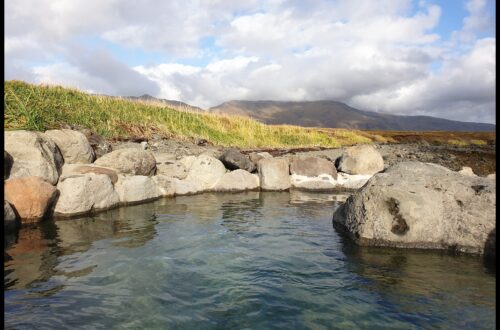
Lagoons & Spas
27. October 2022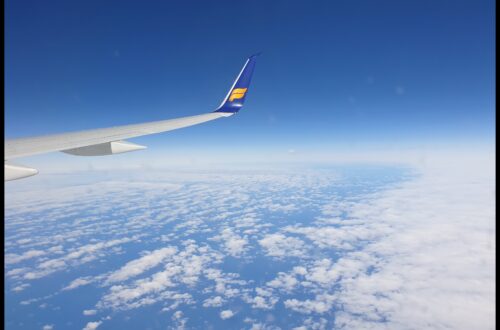
20 frequently asked questions
3. November 2021